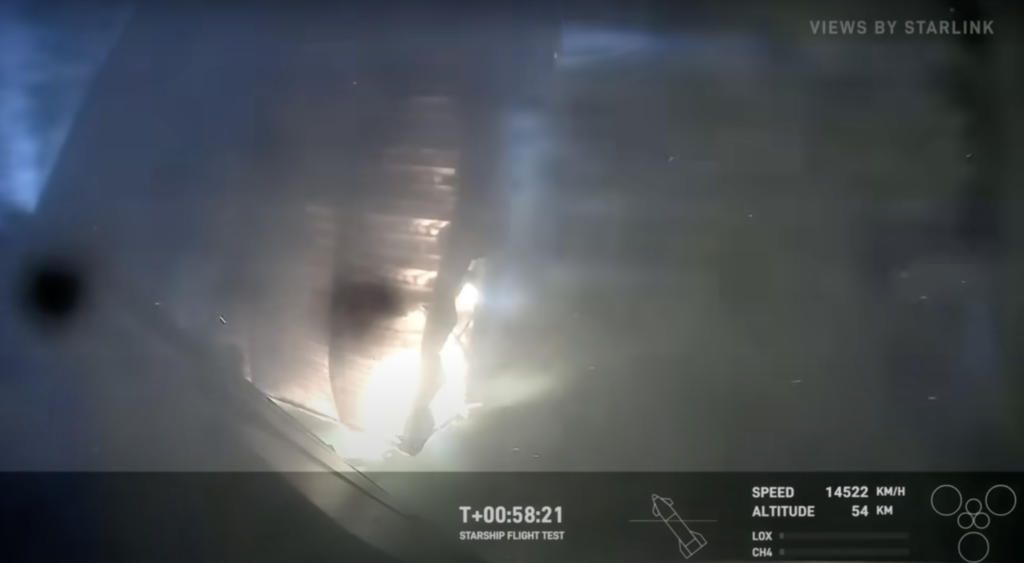With Starship Flight proving that a tower catch is indeed possible, SpaceX is now racing to upgrade the design of the second stage Starship to avoid flap damage during atmospheric reentry. The upper stage Starship’s forward flap was one of the highlights of Flight 4, as, throughout the spacecraft’s reentry, the appendage was engulfed in fire. Yet, despite the damage, Starship survived reentry and made its first successful soft splashdown in the Indian Ocean to allow SpaceX to progress towards an eventual ship tower catch.
Soon after Flight 4, Elon Musk shared that future Starship upper stages would feature upgraded flaps that would remove the chances of a fire and now we have the first image of the new design.
SpaceX’s Leeward Facing Starship Second Stage Fins Spotted
SpaceX’s fourth Starship flight was the first in which the ship survived during atmospheric reentry. Its subsequent successful soft splashdown in the Indian Ocean validated SpaceX’s heat shield design. It put to rest worries of falling heat shield tiles affecting the ship’s performance, and SpaceX also shared that it had deliberately left some tiles missing to understand the aerodynamic effects of atmospheric reentry on the shield.
Along with live views of atmospheric reentry courtesy of SpaceX’s Starlink internet, Flight 4 also captured public imagination through an anomaly on the upper stage’s forward flap. This flap is located at the top of the rocket, and it is indispensable to Starship’s re usability as it steers the ship to the landing area.
The anomaly saw the region where the flap connected with the rocket’s body catch fire and remain on fire throughout its descent. However, Starship proved to be robust and successfully oriented itself for a vertical soft splashdown in the Indian Ocean.


In an interview given before Flight 4 aired after the flight, Musk shared that the fin might catch fire. He outlined that the region where the fin connected with Starship’s body was one of the most vulnerable of the rocket due to hot gas flow which damaged the heat shield tiles and the stainless steel body.
“Sealing that hinge gap and not having hot gas just go flowing super fast through the interface,” shared Musk. He added that SpaceX placed a “hot gas seal at the forward and rear flap hinge,” to test the seal during atmospheric reentry. Musk also revealed a new Starship design for future tests, which would avoid the flap fire. He stated that SpaceX was building “a newer version of Starship has the forward flaps shifted leeward,” or the side of the ship facing away from the wind.
The new Starship design surfaced for the first time last week in an image shared on X. Musk commented on the latest design, sharing that the old one was “large and heavy and positioned at 180 degrees, requiring large static aero and not fully stowed.” This pushed “the nose backwards during the high heating hypersonic phase of flight,” he added.








